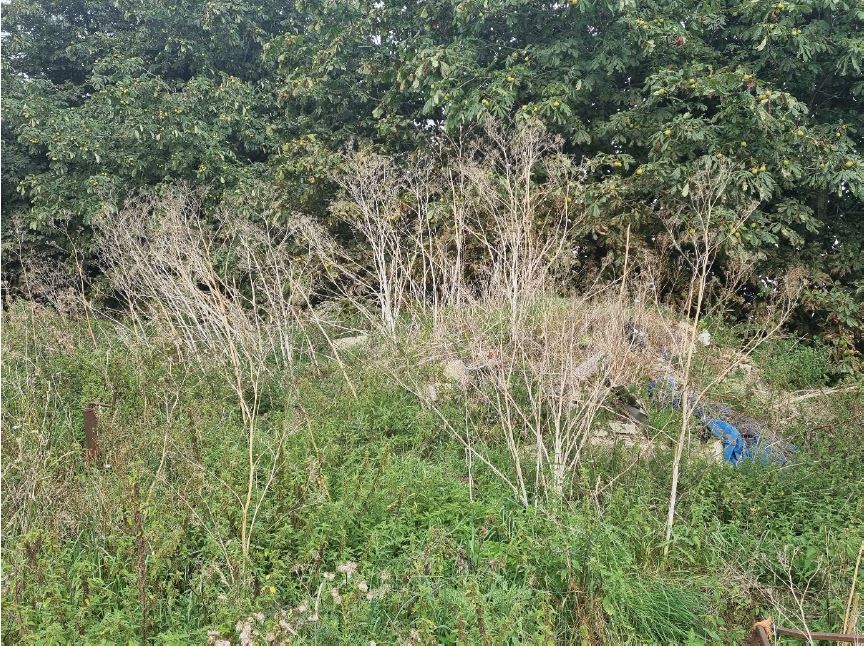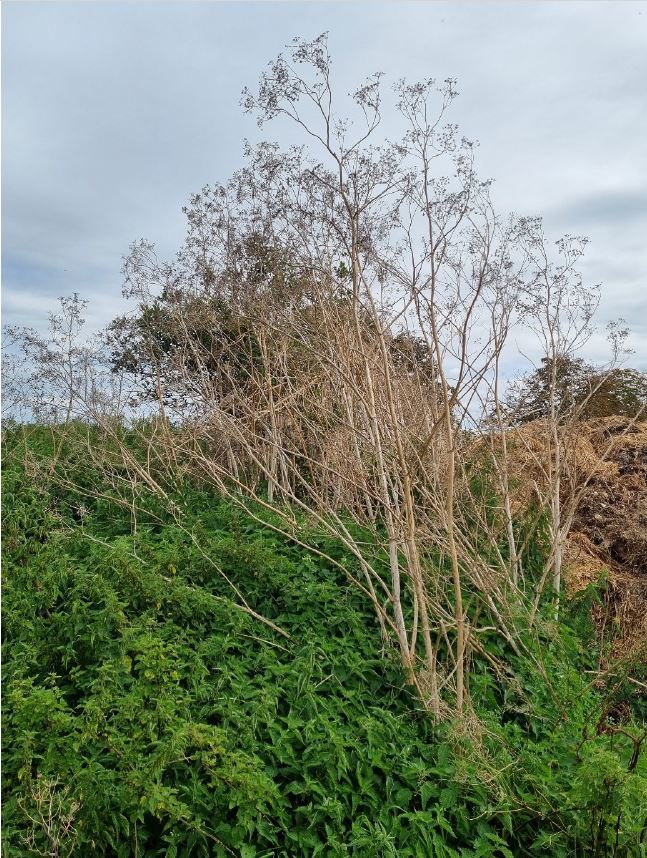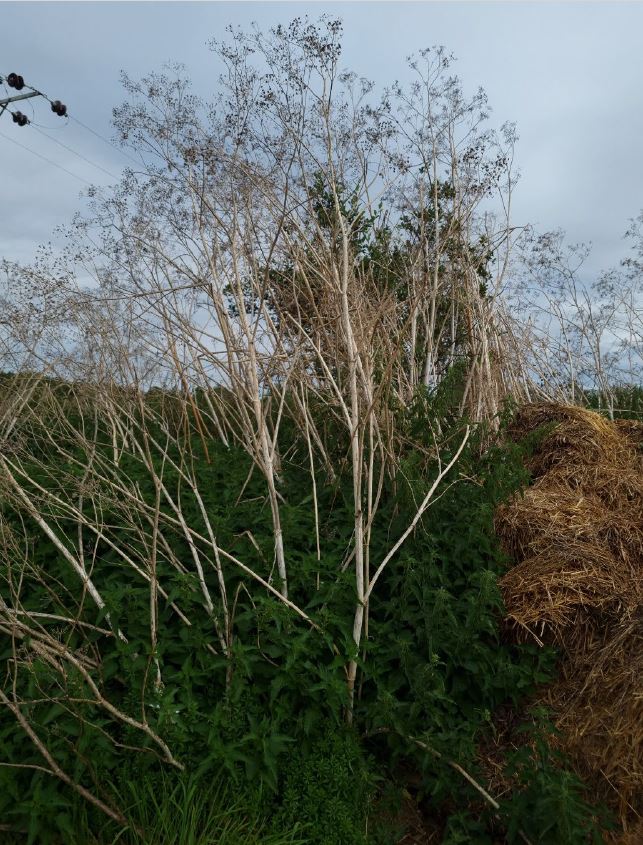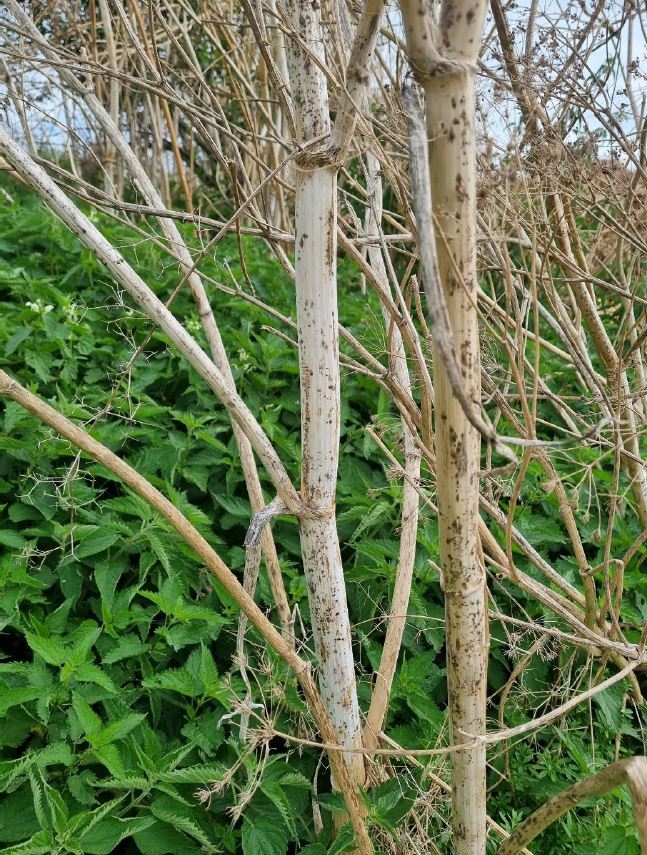Autumn is a very good time for land managers and site managers to identify areas with Hemlock (Conium maculatum) as it is very easy to identify at this time of year.
Hemlock will stand out as distinctive pale cream stems above all the other vegetation, (approximately 2m plus), often with black blotches on the stems, which in summer are the distinctive purple blotches.
Mark the areas for early control programmes next season.

Why should you be bothered about Hemlock – Hemlock is poisonous being toxic to both humans and livestock, a non-native plant species and will rapidly spread.



Hemlock is native to Europe, North Africa and Western Asia. It was introduced to the UK in the Bronze Age and has since become widespread across the British Isles. Hemlock thrives along roadsides, riverbanks, waste ground and areas of disturbed soil. It can invade gardens, parks and other amenity areas.
Hemlock is toxic to livestock and humans
The deadly toxins in hemlock have an infamous place in history. The ancient Greek philosopher Socrates was sentenced to death by drinking a poisonous hemlock infusion in 399 BC. The alkaloid compounds coniine and gamma-coniceine in hemlock cause muscular paralysis leading to respiratory failure and death. Even a small amount of hemlock can be lethal to humans and animals.
Cattle and horses are most frequently poisoned by hemlock as they are attracted to the lush green growth. Around 30 cattle are reported poisoned annually in the UK. Accidental poisoning in humans is rare but has occurred from mistaking hemlock for edible plants like parsley and from herbal teas made from contaminated plants.
Hemlock grows on damp ground
Aside from its toxicity, hemlock spreads aggressively and can quickly colonise areas of land. Each plant produces thousands of seeds that are distributed by wind, water, animals and vehicles. Hemlock grows rapidly in spring and forms tall dense stands that shade and outcompete native plants. Its spread has detrimental impacts on biodiversity, habitats and ecosystems.
Spotted Hemlock on your property?
Mark the area now they are visible for control programmes next season.
Resources
Wildlife Trust – https://www.wildlifetrusts.org/wildlife-explorer/wildflowers/hemlock
Norwich City Council – https://www.norwich.gov.uk/hemlockadvice
The Postcode Areas We Serve
Gloucester and Swindon
Birmingham and the Midlands
Bristol and the South West
Cardiff and South Wales










